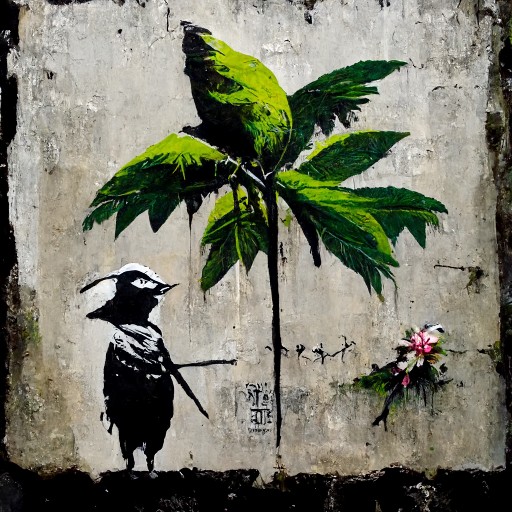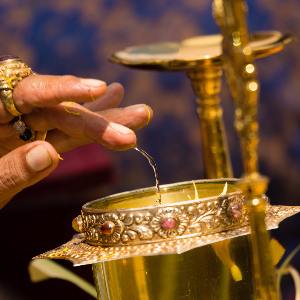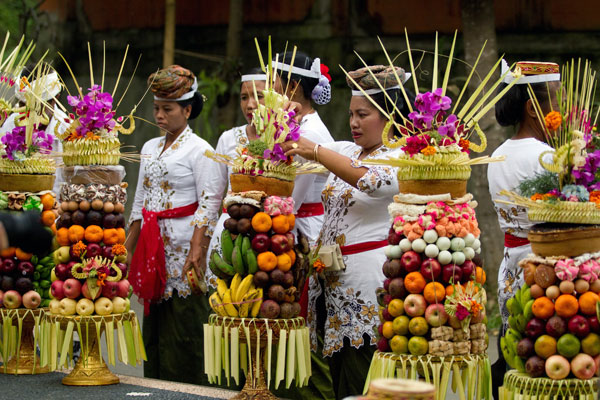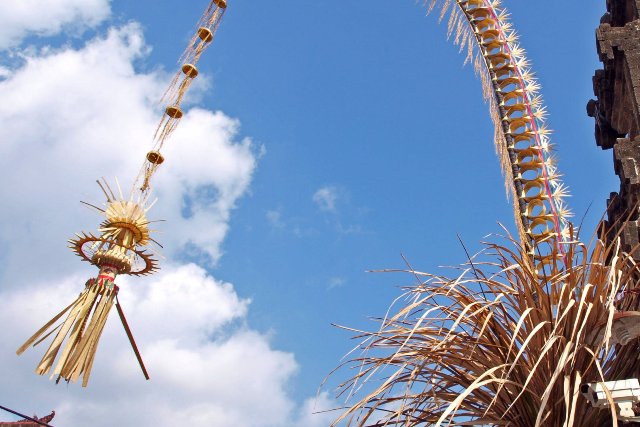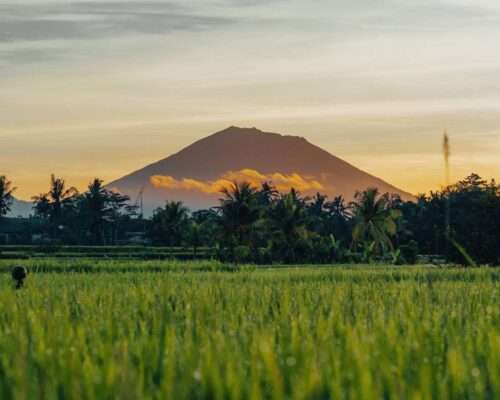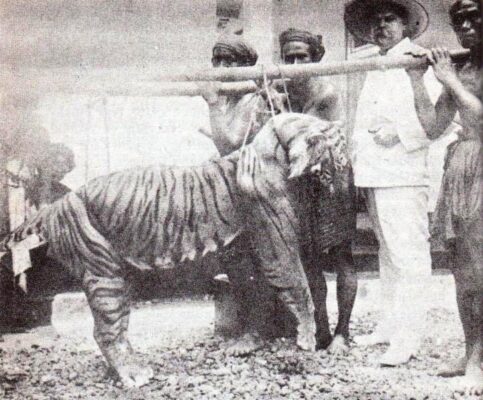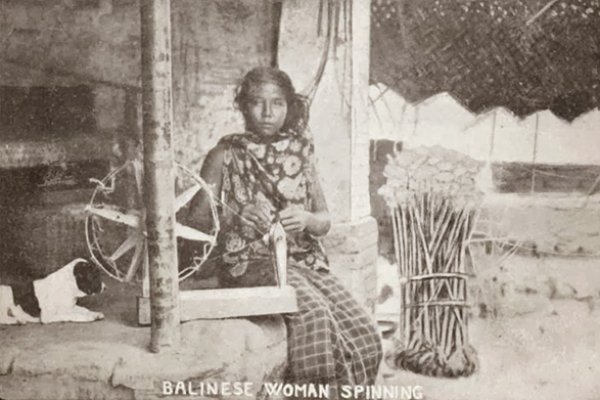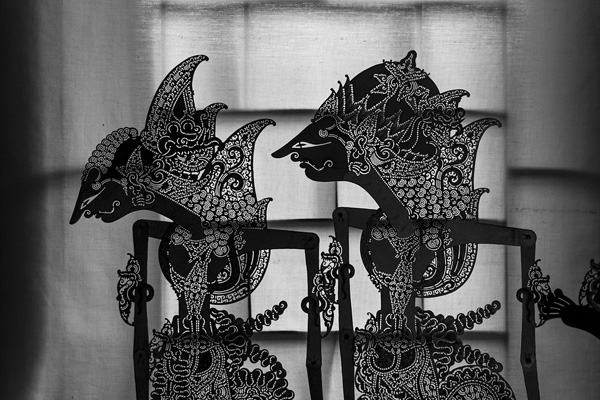How the Balinese celebrate Odalan
Preparation before the ceremony starts
As people begin to enter the temple; the Balinese would often pray with their families. Following the presentation of the offering at the altar, the women will join their families who have already reserved a spot on the ground. The Balinese do not put out chairs or carpets at the temples, and so individuals are seated on their sandals as a cushion; men are sitting with their legs crossed, while ladies are in a kneeling position. Before the ceremony starts, each family member prepares a canang sari in front of them, then light the incense stick.
During the ceremony
The priest will lead by reciting certain holy prayers and occasionally ringing his bell (genta). After fifteen to twenty minutes of prayer, attendees will begin to take flowers from the canang sari. They will wave it above the smoke of the burning incense before tucking it between their fingers while making an adoring gesture with both hands palms together in front of their forehead. The flower will then be placed behind their ears. This ritual will be repeated multiple times, each time utilizing a new color of the flowers from their canang sari.
Following the prayer, the individuals in charge of conducting operations at the temple (known as Jero/Jro) distribute holy water to all the attendees. After sprinkling the water three times into the worshipper’s palms, the devotee will drink from it and splash the remaining on their face. Finally, the devotees will be given a tiny bowl of wet rice to consume and put to their foreheads.
After the ceremony
After the prayers, worshippers are free to spend the rest of their time anyway they choose, while some may choose to go around to the other side of the temple. The pavilion or open hall next to the temple’s central section will serve as the venue for cultural performances. There will be performances of the Baris dance and the Barong dance, and young men will join the gamelan ensemble to play music, delighting both worshipers and divine visitors on that special day. Evening activities during the event will include a shadow puppet show. Each temple will include its own special performances, tailored to their local traditions and culture.
